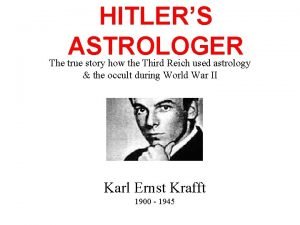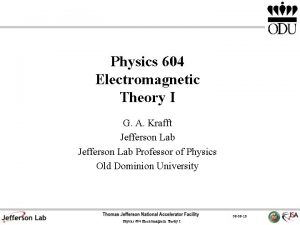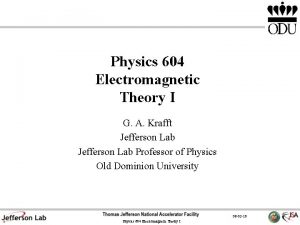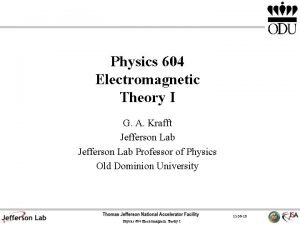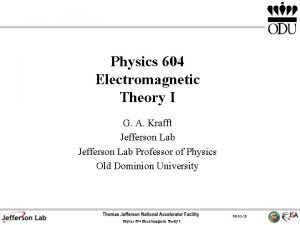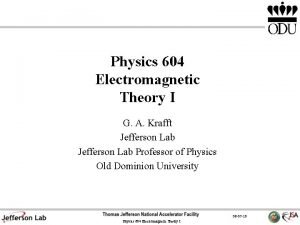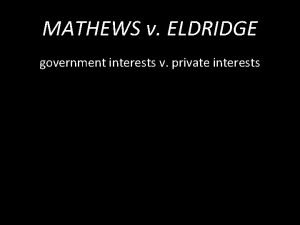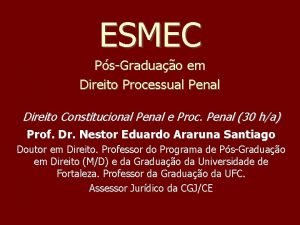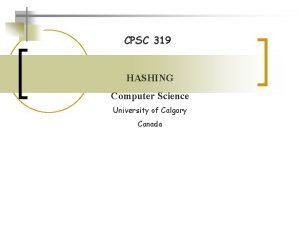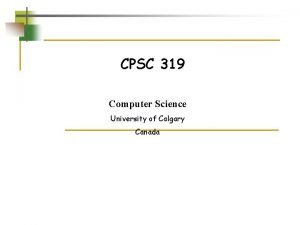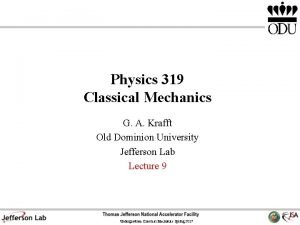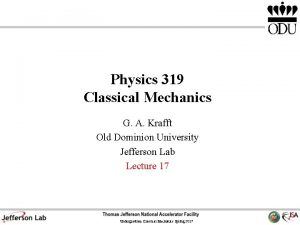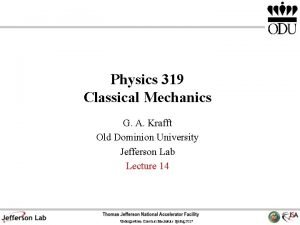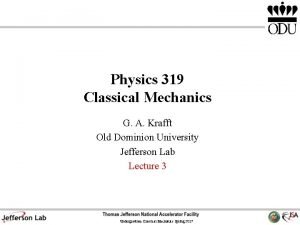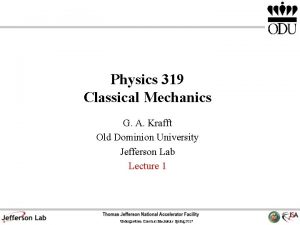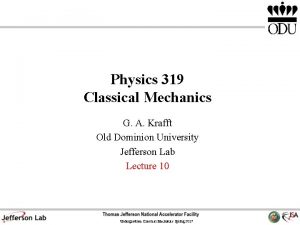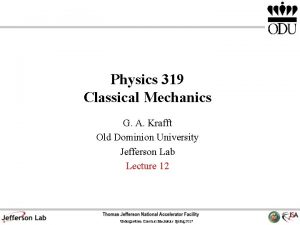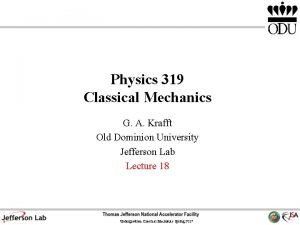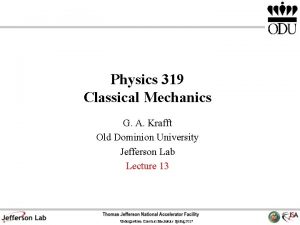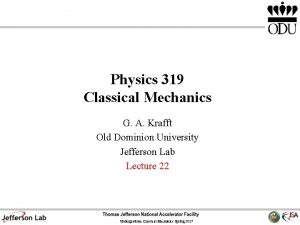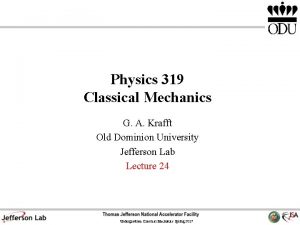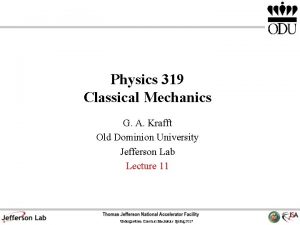Physics 319 Classical Mechanics G A Krafft Old














- Slides: 14

Physics 319 Classical Mechanics G. A. Krafft Old Dominion University Jefferson Lab Lecture 2 Undergraduate Classical Mechanics Spring 2017

Scalar Vector or Dot Product • Takes two vectors as inputs and yields a number (scalar) • • Linear in both inputs and symmetrical For normal (perpendicular) vectors vanishes Maximum when vectors parallel (co-linear) Get the vector norm by Undergraduate Classical Mechanics Spring 2017

Vector Cross Product • Takes two vectors as inputs and yields a normal vector • • Linear in both inputs and anti-symmetrical For co-linear vectors vanishes Maximum when vectors perpendicular Norm of the vector product is the area of parallelogram spanned by the input vectors • Important when rotations involved Undergraduate Classical Mechanics Spring 2017

3 D Velocity and Acceleration • Consider a particle orbit • The velocity is • By product rule from calculus • Acceleration is Undergraduate Classical Mechanics Spring 2017

Simplest Case • In frames where the unit vectors do not depend on time • For constant forces have • Directions solved separately with the freshman physics result. Simple expressions and equations only in inertial frame. Undergraduate Classical Mechanics Spring 2017

Incline Plane Problem Undergraduate Classical Mechanics Spring 2017

Inertial frame • Frame of reference where the frame unit vectors do not depend on time (there is no rotation) and where there are no external forces and accelerations. Operational definition: frame where observer feels no inertial forces. • By the previous result: only if the frame is at rest or uniformly translating at a constant velocity • Newton’s first law: in the absence of forces a particle moves at a constant velocity. A frame of reference tied to the particle motion is an inertial frame. • Newton’s second law: a particle of mass m acted on by a vector force accelerates with the vector acceleration Undergraduate Classical Mechanics Spring 2017

What Newton Really Said • He defined something that we call momentum today and said the total vector force was the time derivative of the momentum • This formula actually works in relativistic situations if include proper relativistic mass in the momentum • In classical mechanics the two formulations are obviously equivalent because Undergraduate Classical Mechanics Spring 2017

Newton’s Third Law • Essentially what we now call conservation of total momentum: if object 1 exerts a force F 21 on object 2, then object 2 exerts an equal and opposite force on object 1: F 12 = ‒F 21 Undergraduate Classical Mechanics Spring 2017

Polar coordinates • First experience with a rotating coordinate system. Unit vectors can now have time derivatives. • You show Undergraduate Classical Mechanics Spring 2017

Derivatives and Second Derivatives • Derivatives • Second Derivatives Undergraduate Classical Mechanics Spring 2017

Acceleration • Acceleration calculated from functions r(t) and θ(t) • Resolved into cylindrical components Undergraduate Classical Mechanics Spring 2017

In this Rotating Coordinate System • The form of the equations of motion is no longer the same. It has extra terms – Centrifugal “force” pushing away from the rotation axis – So-called Coriolis acceleration (more general expression later) • When Fθ vanishes This is the conserved angular momentum in the z direction. Important for the planetary motion problem (Kepler’s second law) Undergraduate Classical Mechanics Spring 2017

Skateboard Problem Undergraduate Classical Mechanics Spring 2017

